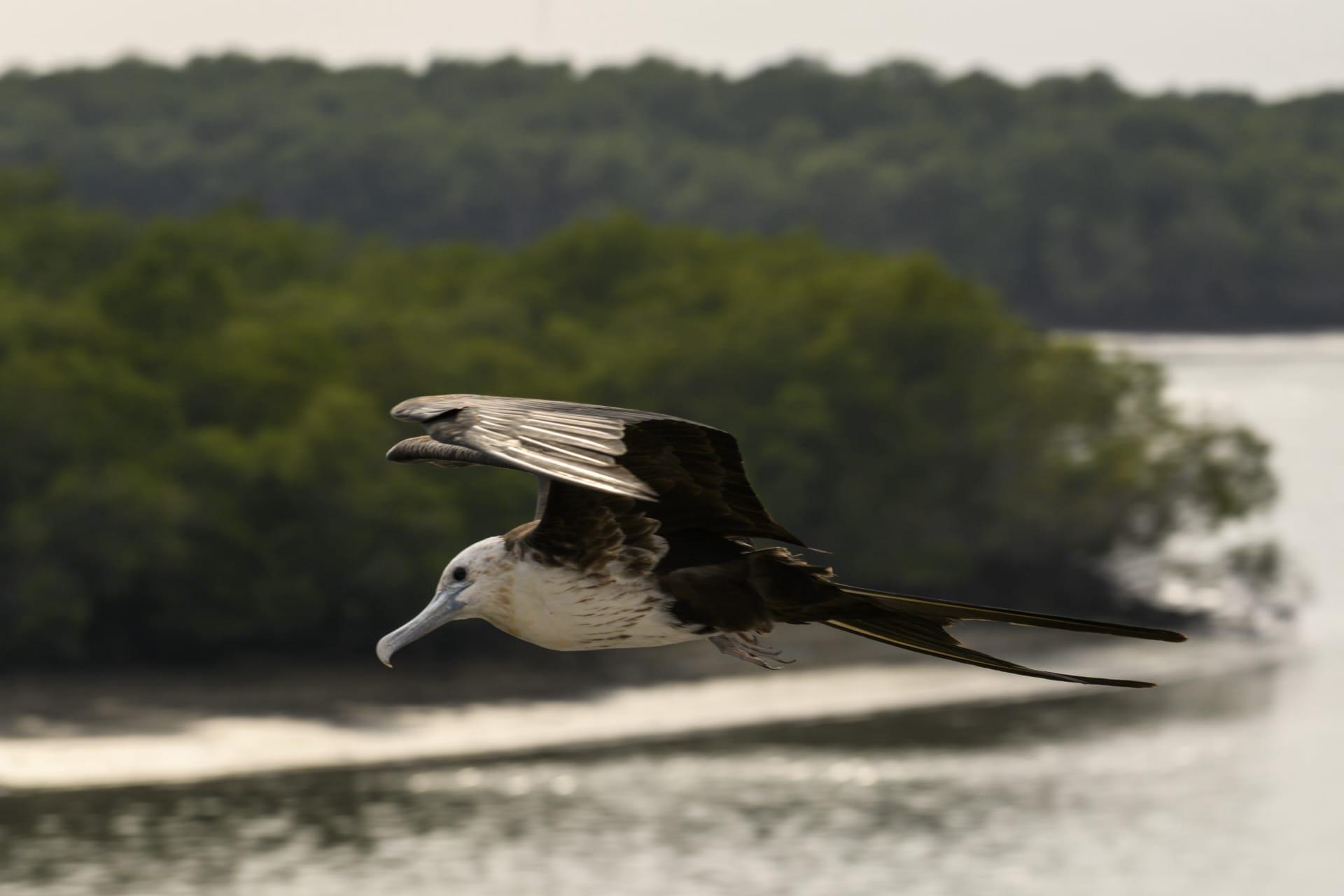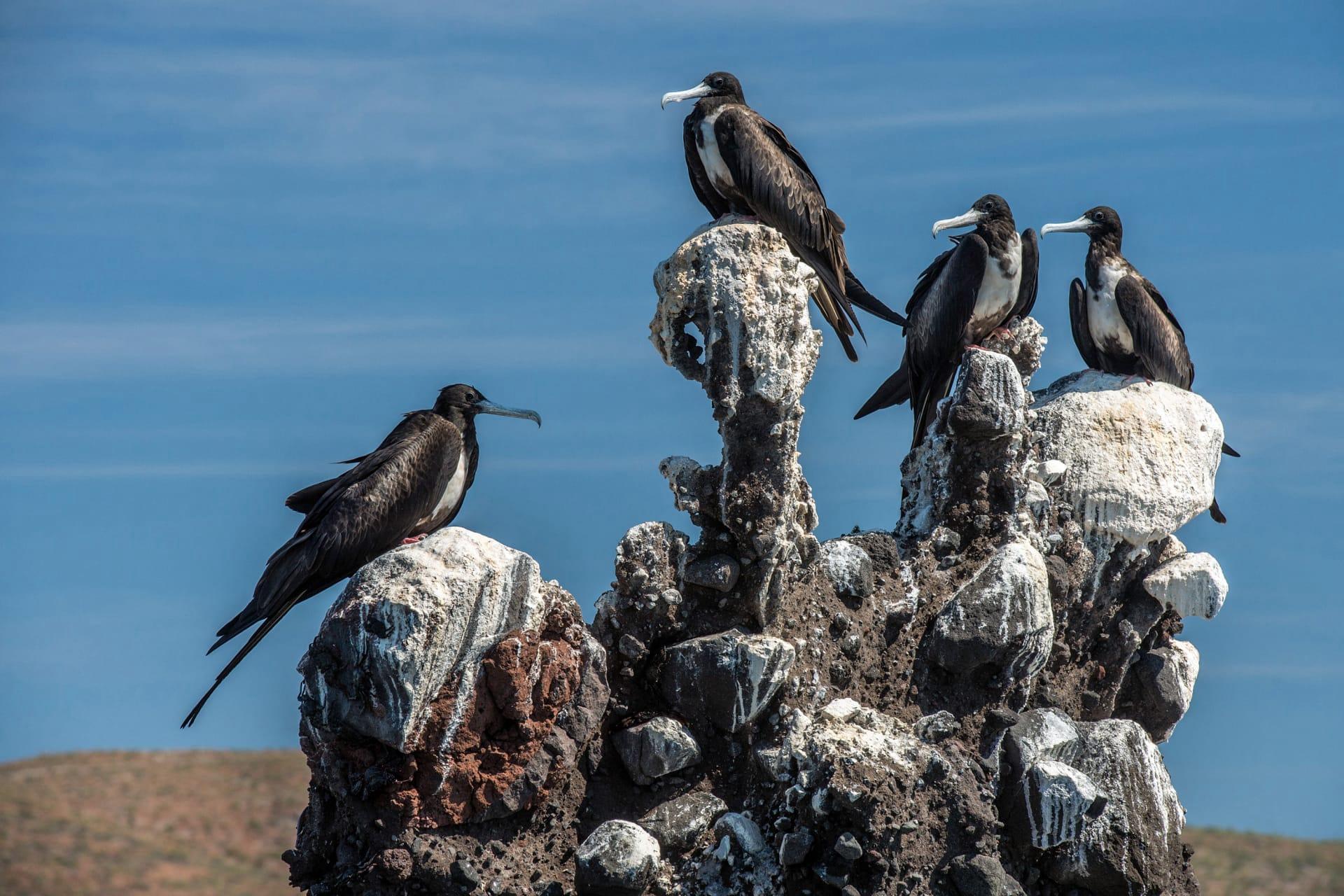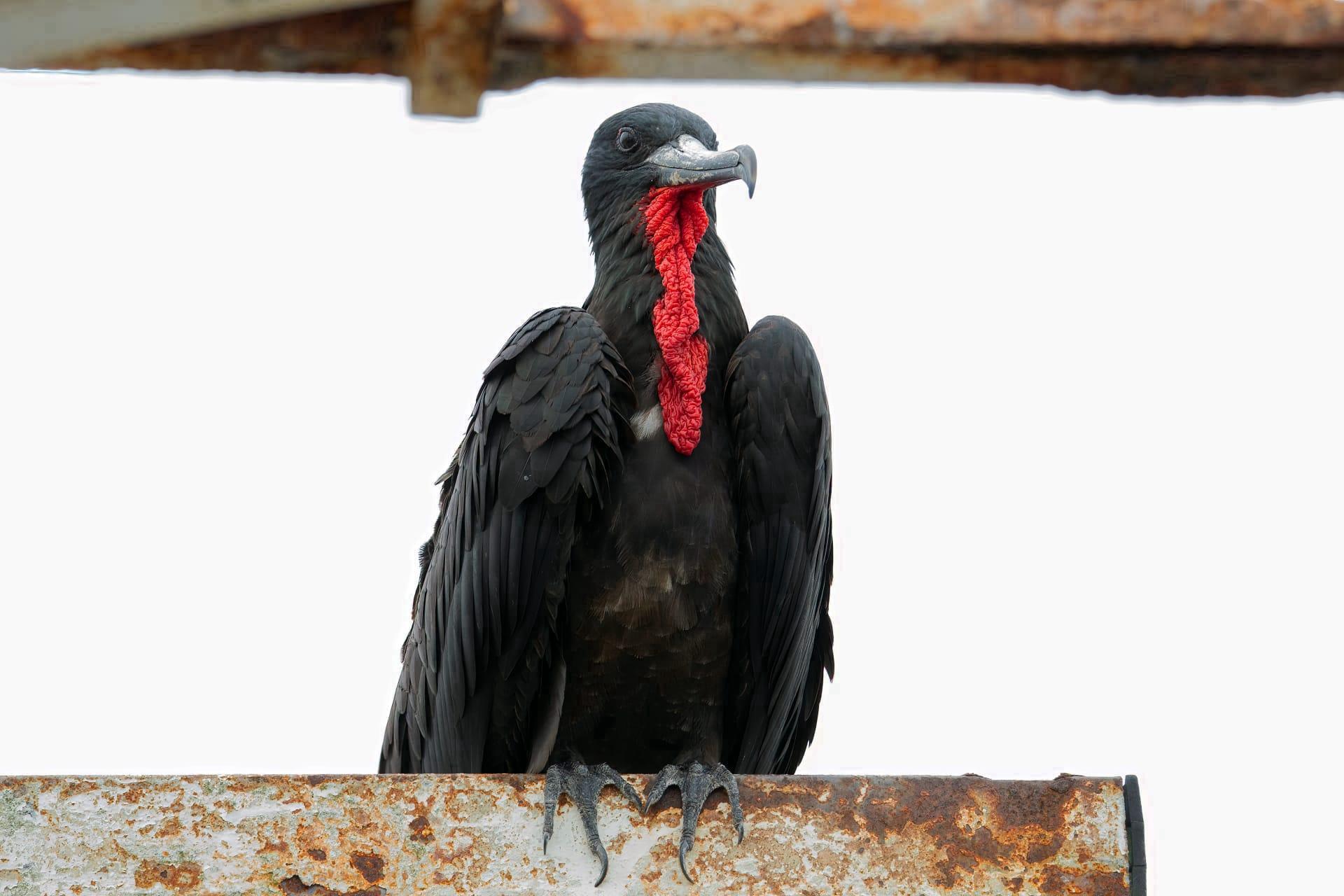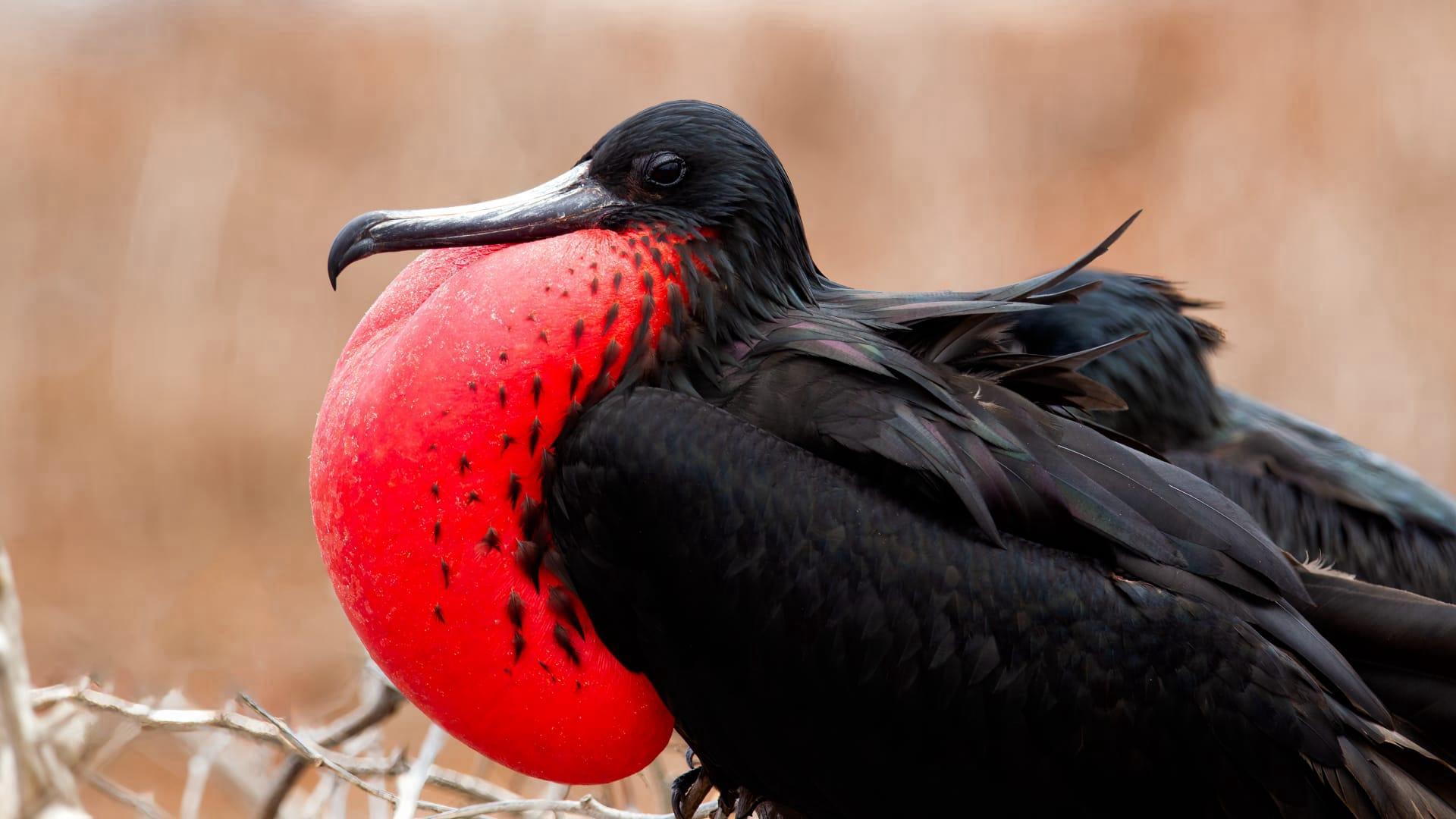1
Frigatebirds, known for their impressive wingspan, have a wing-to-body ratio that's among the highest of any bird. This ratio allows them to glide effortlessly over the ocean for weeks. Their wings can span up to 7.5 feet (about 2.3 meters), while their body weight is typically just 2.7 pounds (about 1.2 kilograms). This lightweight design is perfect for long-distance flying without much flapping, saving valuable energy.
Despite their prowess in the air, frigatebirds have virtually no ability to walk or swim. Their long, thin legs and webbed feet are adapted for aerial life, not for walking or swimming. This means they spend most of their time in the air, only landing occasionally to rest or breed on trees or cliffs. Their lack of buoyancy and their oiled feathers, which aren't waterproof, make them avoid water, relying on their aerial abilities to scoop up fish and squid from the ocean surface.

2
Frigatebirds have a unique way of feeding - they practice kleptoparasitism. This means they often steal food from other seabirds, such as boobies or gulls, in mid-air. They do this by harassing the other birds until they regurgitate their catch, which the frigatebirds then snatch up. This aerial thievery showcases their agility and tactical intelligence in securing food.
Another fascinating aspect of frigatebirds is their nesting behavior. They nest in colonies of up to 5,000 birds, on remote islands and coastal regions. During the breeding season, males display a striking red gular pouch, which they inflate like a balloon to attract females. This colorful display, combined with their courtship dances and loud calls, makes the breeding season a spectacular sight.

3
Frigatebirds are master navigators, capable of traveling thousands of kilometers across the open sea and returning to their exact nesting spot. They use the sun and the stars to navigate, demonstrating remarkable spatial awareness and memory. Their ability to cover long distances is also aided by their low metabolic rate, which is adapted for long flights without food or water.
The lifespan of frigatebirds is another testament to their resilience. These birds can live up to 35 years, a remarkable age for such a large bird. This longevity is attributed to their low metabolic rate and minimal energy expenditure while gliding. Additionally, their isolated nesting sites on remote islands protect them from many predators and human disturbances, contributing to their longevity.

4
Frigatebirds are known for their distinct breeding strategy, where males take on the responsibility of incubating the eggs and caring for the chicks. Once the female lays a single egg, the male takes over the incubation duties, keeping the egg warm under a flap of skin on its belly. This role reversal is unique among seabirds and highlights a fascinating aspect of their reproductive behavior.
Unlike many other bird species, frigatebirds do not have a waterproof plumage, which is why they avoid diving into the water. Their feathers get easily waterlogged, making it difficult for them to take off again if they get wet. This adaptation has led them to develop their kleptoparasitic feeding technique and surface-skimming method to catch fish, ensuring they stay dry while obtaining food.

5
Frigatebirds have the ability to sleep while flying. Researchers have found that they can take micro-naps mid-flight, lasting just a few seconds to a minute. During these naps, they shut down one hemisphere of their brain, while the other remains alert for navigation and to avoid obstacles. This unique adaptation allows them to stay airborne for extended periods without needing to land for rest.
Despite their aggressive feeding strategy, frigatebirds are monogamous during the breeding season and share parental duties. Once paired, a couple will work together to build a nest, often using sticks and twigs. They also take turns in feeding and caring for their chick until it is old enough to fend for itself. This cooperative behavior is crucial for the survival of their offspring, as the parental investment from both parents significantly increases the chick's chances of survival.